In-Depth Analysis of the MacBook A1502 Display
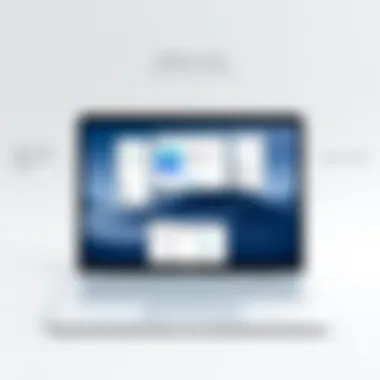
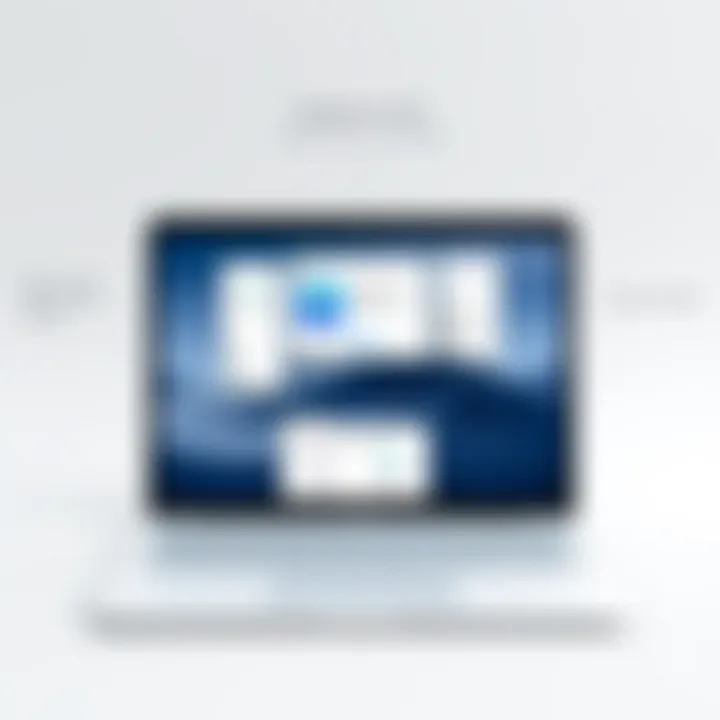
Intro
As technology continues to evolve, so too do the components within our beloved gadgets. For users and enthusiasts alike, the MacBook A1502 represents a significant player in the realm of portable computing. At the heart of this device lies a screen that not only enhances the user experience but also serves as a window to the innovations within Apple’s engineering. Understanding the intricacies of this screen—the numerous specifications, potential issues, and care recommendations—can empower both casual users and tech aficionados to make informed decisions that elevate their overall experience with the device.
In this article, we embark on a comprehensive journey, peeling back the layers of the MacBook A1502 screen. This examination includes an overview of the product, its performance, installation and setup guidance, the pros and cons, and ultimately, our final reflections on what it offers to the modern consumer. Whether you’re a gamer seeking vivid visuals, a tech enthusiast hungry for detailed specs, or just someone wanting to maintain their device's performance, there’s something in here for you.
Lets dive in.
Foreword to MacBook A1502
The MacBook A1502 stands as a significant model in Apple's lineup, serving both everyday users and professionals alike. Understanding its features, particularly the screen, is essential when discussing the overall user experience. The display plays a critical role, affecting everything from productivity to entertainment.
In this section, we will explore key aspects of the MacBook A1502, shedding light on its relevance in the tech landscape. Users often overlook the intricacies of a laptop screen, yet it is paramount in determining performance and satisfaction.
Overview of the MacBook A1502
Released in the latter part of 2013, the MacBook A1502 is part of the MacBook Pro Retina line. This series marked a departure from traditional laptop displays, introducing Retina technology, which is a hallmark of Apple products. The A1502 model boasts a 13.3-inch display with a resolution of 2560 x 1600 pixels, presenting crisp and vibrant visuals.
The screen itself features LED backlighting, which optimizes brightness and color consistency. This enhancement not only improves viewability in various lighting conditions but also helps in reducing power consumption. The laptop's design is sleek, emphasizing portability, which makes it attractive for students and professionals who are constantly on the go.
This model aims to balance performance with design, appealing to creative users like photographers and graphic designers, who depend heavily on accurate color representation.
Market Position and Popularity
The MacBook A1502 has carved out a commendable spot in the competitive laptop market. Analysts pinpoint its blend of performance, portability, and aesthetic appeal as key contributors to its popularity.
Compared to its contemporaries, the A1502 stands out for its robust build quality and the integration of Apple's ecosystem, offering seamless compatibility with iPhones, iPads, and other Apple devices. This interoperability is especially attractive for users already invested in Apple's other products.
Since its release, this model has held up well against newer iterations by retaining relevance among users. Many still opt for the A1502 when seeking a reliable machine for day-to-day tasks or creative endeavors, providing a testament to its enduring legacy.
"The MacBook A1502 has not just been a commodity; it's a companion for many users who find reliability in its familiar design and features."
Moreover, the A1502 has garnered a reputation for being a cost-effective option for those who desire a Retina display without breaking the bank. The pre-owned market for this model remains robust as well, highlighting its continued appeal to cost-conscious consumers.
In an age where technology evolves rapidly, the MacBook A1502 manages to hold its own, thanks to its user-friendly features and quality construction that truly reflect Apple’s commitment to excellence. With this understanding, readers are better prepared to delve deeper into the specific aspects of the A1502 screen, setting the stage for the subsequent sections.
Technical Specifications of the A1502 Screen
The technical specifications of the A1502 screen serve as a cornerstone for understanding how this device functions. Since the screen is the primary interface between the user and the MacBook, its characteristics directly influence the overall user experience. Users must consider various aspects such as screen type, resolution, and performance metrics to make informed decisions about their devices. Each element plays a crucial role in delivering the clarity, color accuracy, and responsiveness that modern users expect. Below, we’ll delve deeper into the different facets of this screen that not only highlight its strengths but also its limitations.
Screen Type and Technology
Retina Display Features
The Retina Display is a hallmark of Apple's commitment to visual excellence. What sets this feature apart is its ability to deliver an impressive pixel density, making individual pixels nearly indistinguishable to the naked eye. This sharpness is critical, especially for design professionals and photographers who demand precision in their visual tasks.
One of the key characteristics of the Retina Display is its high resolution, which significantly enhances the overall viewing experience. Users benefit from seeing rich details and vibrant colors, crucial for tasks that involve graphic design or video editing. However, this high-quality display can also lead to some drawbacks. The increased demands on battery life and potential overheating issues are considerations that users should keep in mind. Despite these downsides, the benefits often outweigh the negatives for those who prioritize visual performance.
LED-Lit Technology
LED-lit technology plays a fundamental role in fostering an exceptional viewing experience. Unlike traditional displays, the use of LEDs offers improved brightness and color consistency, making the A1502's screen capable of rendering images more vibrantly. This brightness is particularly useful in varying lighting conditions, whether you’re working in a sunny cafe or a dimly lit room.
A unique feature of LED-lit technology is its energy efficiency. Compared to older backlighting technologies, LEDs consume less power while delivering superior lighting performance. This advantage not only enhances battery life, but it also promotes a more eco-friendly approach to technology usage. Yet again, while LED screens can be more reliable, they are sensitive to temperature changes, which is something users should be conscientious about as it may lead to degradation over time.
Screen Resolution and Performance
Pixel Density
Pixel density plays a significant role in defining the quality of a display. In the case of the A1502 screen, a high pixel density translates to smoother images and sharper text. This characteristic is particularly beneficial for specific users, including graphic designers and gamers, who thrive on crisp details and fast frame rates.
What’s particularly noteworthy about the A1502 is its impressive number of pixels packed into a reasonable screen size. This design choice ensures that the display remains large enough for enjoyable viewing without compromising sharpness. That said, more pixels can lead to increased processing demands on the GPU, which may affect performance during intensive tasks.
Color Accuracy
Color accuracy is a critical aspect of any display technology, and it can make or break the user experience, especially for those in creative fields. The A1502 screen is designed to depict colors as close to what you see in the real world. This accuracy is vital for tasks like photo editing, where true-to-life colors are non-negotiable.
One of the significant advantages of having a screen with high color accuracy is the seamless transition between workspaces that rely on different color profiles. This feature simplifies the workflow for professionals, leading to more efficient project completions. However, achieving high color accuracy usually requires calibration, which could be seen as a hurdle for casual users who might not be tech-savvy enough to handle such adjustments.
Overall, understanding these technical specifications helps users appreciate the engineering marvel that is the MacBook A1502 screen. Knowing what makes up the display allows users to leverage its strengths, minimize its weaknesses, and ultimately maximize their computing experience.
Common Issues with the A1502 Screen
Understanding the common issues faced by users of the MacBook A1502 screen is vital. These problems can significantly impact the overall experience of using this device. Equipped with this knowledge, users can not only diagnose their devices more effectively but also take proactive steps to mitigate potential problems. Addressing screen issues promptly can extend the lifespan of the notebook and improve daily functionality for both tech enthusiasts and casual users alike.
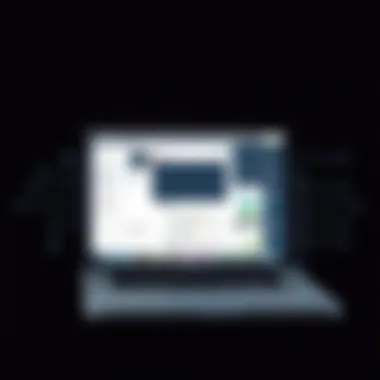
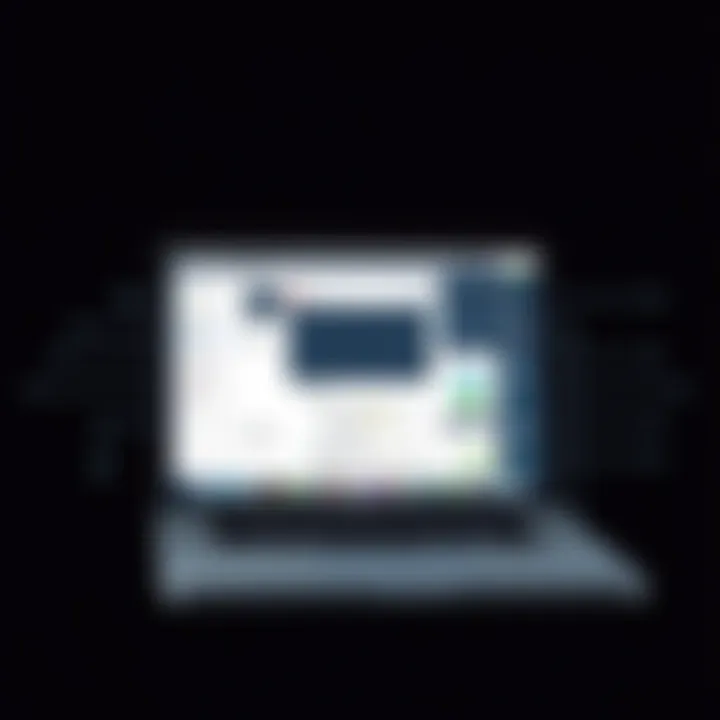
Screen Damage and Failures
Cracks and Scratches
Cracks and scratches are among the most reported concerns when it comes to the MacBook A1502 screen. Such damage can detrimentally impact both aesthetics and usability. A crack can obstruct visibility, while scratches might result in a distracting glare when sources of light hit the screen's surface. This is particularly noticeable for users who spend long hours on their devices, such as designers or gamers.
Key Characteristics: Cracks often stem from accidental drops or pressure on the screen, while scratches usually arise from day-to-day handling without appropriate protection. The most significant aspect of cracks is that they might worsen over time if not addressed, leading to further deterioration of the display.
Advantages and Disadvantages: On one hand, awareness of potential damage can encourage better handling. On the other hand, once cracks form, repair might be expensive and inconvenient. Repairing even small scratches might require professional help, and trying to address them at home can often cause more harm.
Dead Pixels
Dead pixels can be a real bother when it comes to displaying images correctly. These flaws appear as tiny black or discolored spots on the screen, rendering part of the display unusable. For gamers, film-editors, and even casual internet scrollers, such distractions can detract from the overall enjoyment of using the device.
Key Characteristics: Dead pixels usually stem from manufacturing defects or development problems during the lifecycle of the screen. This specific issue is one that can vary in severity, with a few pixels causing minor annoyance, while a larger cluster might lead to serious usability concerns.
Advantages and Disadvantages: Identifying dead pixels early can lead to potential warranty and replacement options, making it easier for the owners to resolve the issue. However, these dead pixels might not be covered under warranty if deemed cosmetic in nature, resulting in additional costs for repairs or replacements.
Display Malfunctions
Flickering
Flickering is another common problem with the A1502 screen that can cause significant frustration. This issue presents itself as a rapid flashing or irregular dimming of the display that can be an indicator of underlying hardware malfunctions or problems with the display drivers. For graphic designers or anyone who relies on precise color often sees flickering to be a severe impediment.
Key Characteristics: Flickering could represent issues ranging from loose connections, software glitches, or even the onset of screen failure. The frequency of flickering can vary, and in some cases, it may resolve with simple troubleshooting applications.
Advantages and Disadvantages: Users keen on tackling flickering promptly may improve their overall device experience through simple software updates or hardware checks. However, lingering flickering can eventually lead to more significant issues if overlooked, potentially meaning costly repairs down the line.
Color Distortion
Color distortion refers to the display failing to reproduce colors accurately, resulting in off hues that can affect the quality of graphics and video playback. This issue stands out for artists, photographers, and average users alike, as they expect their screens to showcase vibrant and accurate visuals.
Key Characteristics: This distortion often stems from either software or hardware issues, or even a combination thereof. Improper calibration could lead to unsightly differences in expected versus actual colors displayed.
Advantages and Disadvantages: Accurate identification of color distortion issues can assist users in rectifying problems through settings adjustments or calibration. However, prolonged color distortion might indicate deeper problems requiring expert intervention. Resolving these could potentially lead to improved user satisfaction and enhanced productivity for creative professionals.
Screen Replacement Options
When it comes to the MacBook A1502 screen, knowing your replacement options is key. Choices made during the replacement process can significantly affect device performance and user experience. Understanding nuances like OEM and aftermarket screens gives you a clearer idea of what's at stake. Furthermore, being equipped with the knowledge of DIY replacements can save money and empower you to take control of your device's maintenance.
OEM vs. Aftermarket Screens
Quality Considerations
OEM, or Original Equipment Manufacturer screens, are the real deal. They’re designed with the same specifications as the original screen on your MacBook A1502. The quality easily stands out. One primary characteristic is the reliability of pixel density and color accuracy. OEM screens offer a consistent experience, which often translates to longer lifespans and better performance. This aspect makes them a favorable choice for proper functioning, especially in color-sensitive tasks like photo editing or gaming.
On the flip side, aftermarket screens can vary wildly in quality. While they may look similar, they often lack the build quality expected from OEM options. This inconsistency can lead to issues like flickering or color distortion, which can drive a tech-savvy user up the wall. If you need a flawless display, it's better to weigh the pros and cons of quality against price.
Pricing Differences
Pricing is another vital aspect when selecting a replacement screen. OEM screens tend to carry a higher price tag, sometimes making users wince. However, this price often reflects the durability and performance quality you should expect from genuine parts. A significant characteristic here is that investing in an OEM screen can prove more economical in the long run, reducing unexpected failures and further costs.
In contrast, aftermarket screens generally come at a fraction of the cost. One might think, “Why not save some bucks?” But the hidden costs can emerge when poor-quality screens fail prematurely, necessitating further replacements. Thus, while they appear cheaper upfront, they could result in a worse financial hit over time.
DIY Replacement Procedures
Necessary Tools
If you opt for a DIY replacement, having the right tools is crucial. A set of precision screwdrivers tailored for electronics is a good starting point. Another essential is a suction cup tool; it helps you gently lift the screen from the chassis. The thing about necessary tools is that they aren’t just a list of objects; each item plays a specific role in ensuring a clean and smooth replacement process. The greater the precision in handling these tools, the safer your MacBook's internal components will remain.
For instance, a plastic opening tool helps avoid scratching or damaging the laptop's shell, ensuring a professional finish to your work. Having these tools on hand makes the process not only efficient but enjoyable too, giving you deeper involvement in caring for your device.
Step-by-Step Guide
A step-by-step guide offers clarity in navigating the replacement process. Breaking down tasks into bite-sized pieces helps in avoiding confusion, particularly for those who may not have a technical background. Key features of a comprehensive guide include images or diagrams showing each step, ensuring users understand what they are looking at. This aids in lifting the ambiguity that often accompanies screen replacements.
Additionally, a carefully laid out guide emphasizes safety measures, such as grounding yourself before working on the device to prevent static damage. Good guides also remind the user to keep track of screws and components, reducing the chance of loss. Through attentive execution, users can achieve clean, professional-looking results, ultimately enhancing their own confidence in tech repairs.
"Investing time in understanding how to properly replace your screen means investing in your MacBook's longevity. It becomes less about fixing mistakes and more about prolonging the life of a crucial element of your laptop."
Understanding all these facets of screen replacement not only informs necessary decisions but also empowers users to make knowledgeable choices regarding their MacBook A1502. Whether it’s opting for an OEM screen for quality assurance or summoning the courage to perform a DIY replacement, having the right information in hand can make all the difference.
Maintenance Tips for the A1502 Screen


Taking proper care of your MacBook A1502 screen can significantly prolong its life and maintain its visual quality. The screen is often the most delicate part of a laptop, and neglecting its maintenance can lead to irreversible damage. By integrating effective cleaning and protective strategies into your routine, you can not only enhance your viewing experience but also preserve your device's value. Here, we take a closer look at essential maintenance tips that can help keep your MacBook A1502 screen in tip-top shape.
Cleaning and Care Techniques
Recommended Products
When choosing products for screen cleaning, it's important to select those specifically designed for electronics. Microfiber cloths are a go-to choice for many users due to their gentle texture, which helps avoid scratches. Additionally, cleaning solutions like isopropyl alcohol-based sprays (at a concentration of 70% or less) are highly recommended because they evaporate quickly without leaving streaks.
A unique feature of some products is their ability to repel dust and fingerprints, which can reduce cleaning frequency. However, it's vital to ensure that any product used is non-abrasive and alcohol-free to avoid damage to the screen's coating.
Cleaning Frequency
Cleaning your screen too often can wear it down, while not cleaning it enough can result in dirt accumulation. A good practice for most users is to clean the screen once a week to maintain clarity without excessive wear.
Some folks might find seasonal cleanings helpful, especially if they frequently travel with their laptops. The unique aspect of regular cleaning is that it helps you quickly identify any potential issues, like scratches or pixel problems, before they worsen.
Protective Measures
Screen Protectors
Investing in a high-quality screen protector can offer an additional layer of security against scratches and smudges. These protectors are often designed to fit precisely over the MacBook A1502's screen, providing a clarity that doesn't diminish the display quality. The key characteristic of a good screen protector is its self-healing ability, which allows minor scratches to disappear over time. While it might be considered an extra cost, it often pays off in maintaining the screen's aesthetics and functionality for longer.
Cases and Covers
Using a durable case not only safeguards your laptop as a whole but also provides extra protection against external pressure on the screen during transport. Covers that incorporate padding can absorb shocks resulting from accidental drops or bumps. It's also beneficial to select a case that allows easy access to the laptop without needing to remove it, thus encouraging regular use without sacrificing safety.
While there may be various designs available, the unique feature of having a case with a built-in keyboard cover can also help reduce the chances of the screen getting smudged by key imprints.
Overall, the right maintenance practices can make all the difference in enjoying a pristine MacBook A1502 screen for years to come. By being proactive and incorporating these cleaning and protective strategies into your routine, you're not just enhancing your device’s appearance – you're safeguarding your investment.
Understanding Warranty and Repair Options
Understanding warranty and repair options is vital for anyone who owns a MacBook A1502, especially when it comes to safeguarding the investment in quality components like the screen. Consider the warranty as a safety net; it comforts users who might otherwise feel anxious about potential issues. This section digs into how Apple's warranty policies work, some enticing options like AppleCare, and the landscape of third-party services that can either save you a penny or give you a headache.
Apple's Warranty Coverage
Apple’s warranty coverage is structured to provide some peace of mind regarding defects and repairs. This coverage typically stretches for one year from the date of purchase, and it includes repairs for manufacturing defects, which can be particularly beneficial for the screen of the A1502.
Limited Warranty Details
The limited warranty covers only manufacturing defects, and it does not extend to accidental damage. This limitation is key because while it ensures that you won't pay for defects that arise from the assembly line, it doesn’t cover the oh-so-common oops moments, like dropping your device on the pavement. Users need to note that they are responsible for the shipping costs if they have to send their MacBook out for repair.
A unique feature of Apple's limited warranty is that it sends two key messages: it reassures customers about the quality of their products, while also emphasizing that users must exercise care with their devices. It highlights the importance of handling the MacBook with care.
AppleCare Options
For those who want extra help, AppleCare can be a godsend. It’s a type of extended warranty where you pay an additional fee for enhanced coverage. This adds two more years of protection beyond the standard one-year warranty, as well as 24/7 priority support. Users often remark how this is especially beneficial for individuals prone to screen-related accidents.
What sets AppleCare apart is its comprehensive coverage against accidental damage—though it charges a deductible for repairs, often much lower than the cost of a full-screen replacement. This benefit, while requiring investment, becomes appealing for those who wish to secure a broader range of protection for their devices.
Third-Party Repair Services
When the worst unfolds, and your screen shows damage, you may consider third-party repair services as an alternative to Apple. This can save a bit on repair costs but may come with its own set of challenges and savings.
Service Costs
Service costs for third-party repairs can vary significantly. Often, these services offer a more affordable option compared to Apple, tempting users to take that route. For instance, a screen repair might run around $100 to $200, while Apple may charge closer to $600, depending on the extent of the damage.
However, it’s vital to remain aware that these lower costs sometimes come at the expense of quality. Users may receive aftermarket parts that don’t have the same performance standards as original components. So while saving money can feel like a small victory, it’s essential to factor in the longevity and overall performance of your MacBook screen.
Choosing a Reliable Service Provider
When seeking third-party repair options, one of the most critical steps is choosing a reliable service provider. The service you select can determine whether your screen woes will be resolved effectively or lead to more trouble down the line.
Look for providers with solid reputations; online reviews often paint a clear picture. Certifications and warranties from these providers can also lend credibility to their offerings. A unique feature here is that some of these services offer life-time warranties on their work, which can serve as a great backup plan should issues arise in the future.
In sum, understanding the warranty and repair options available for your MacBook A1502 is not just about knowing what is covered; it’s about being proactive. A good warranty can save you time, money, and a lot of frustration, while careful provider selection for repairs can ensure your device gets the care it deserves.
Comparative Analysis with Other MacBook Models
When discussing the MacBook A1502, it is crucial to place its screen in context with other models, particularly the A1398 and A1466. This comparative analysis not only sheds light on the strengths and weaknesses of the A1502's display but also helps users understand how its features stack up against those of other MacBooks. By examining certain facets of these displays, we can better appreciate the specific advantages and limitations of each model related to user experience, performance, and design.
A1502 vs. A1398 Screen
Display Quality
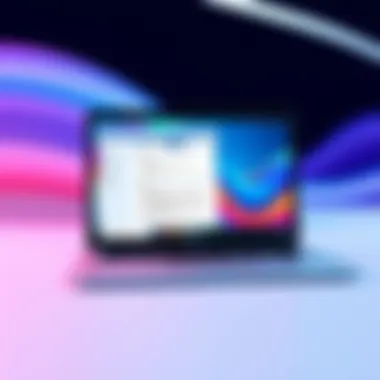
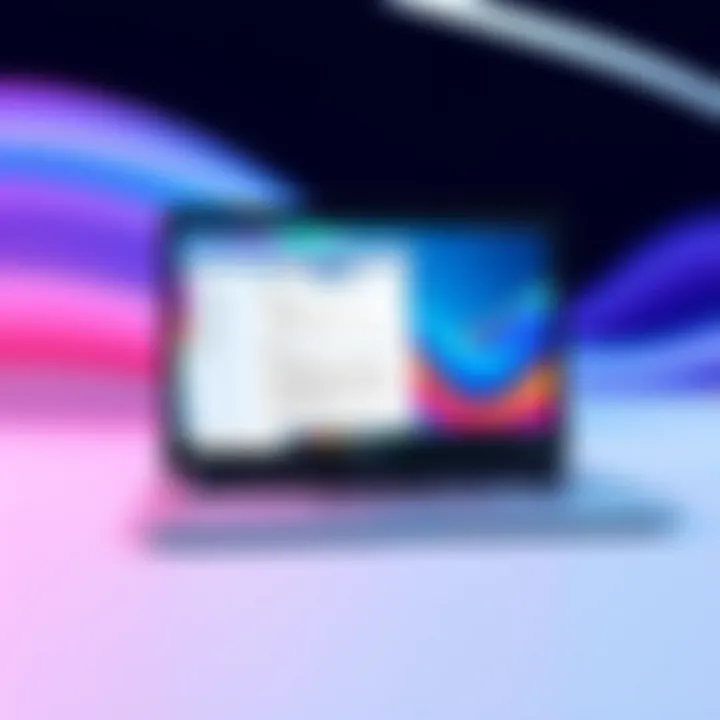
One of the critical elements to consider when comparing the A1502 screen to the A1398 is the display quality. The A1398 has a larger and slightly higher resolution Retina display. This enhances clarity and sharpness in images and text, allowing users to experience more detailed visuals. Notably, the color accuracy in the A1398 is often praised, making it a favorite amongst photographers and designers.
In contrast, while the A1502 also features a Retina display, the pixel density doesn’t match up to its sibling. However, this does not mean it compromises too much on quality. The A1502 is relatively bright and provides vibrant colors, making it a suitable option for everyday tasks and media consumption. The trade-off here is that the A1502, while not as stellar as the A1398, presents a balanced performance for general users.
Size Differences
The size differences between these two models are also noteworthy. The A1502 sports a 13.3-inch screen, whereas the A1398 has a considerably larger 15.4-inch display. The larger size of the A1398 allows for increased workspace, making it a go-to for multitasking professionals. Moreover, the added screen real estate is beneficial for those who engage in video editing or graphic design where detail is paramount.
On the flip side, the A1502’s compact size makes it ultra-portable, catering well to users on the move. Its lightweight design is ideal for students or business travelers who need an efficient way to bring their work along. The downside, of course, is that creative tasks are slightly hampered due to the smaller viewing area.
A1502 vs. A1466 Screen
Performance Comparison
When examining performance between the A1502 and the A1466, several factors come into play, including brightness, refresh rate, and response time. The A1466 has a reputation for solid performance with excellent viewing angles, thanks to its robust LED panel. Users often report fewer issues with screen glare, making it a preferred choice for outdoor or bright environments.
In terms of refresh rates, both screens offer a fluid experience for regular browsing and media consumption. The A1502 generally performs well for casual gaming and video playback, but when high performance is sought, users may feel the A1466 edges slightly ahead due to its superior handling of colors and contrast.
User Experience
The user experience is perhaps the most subjective aspect when comparing the screens of the A1502 and A1466. Users of the A1466 often highlight an immersive experience, particularly where vibrant colors and contrast ratios are concerned. This model delivers a satisfying visual experience that can captivate during extensive multimedia sessions.
However, the A1502’s user experience shouldn’t be brushed aside. Despite having a smaller display, its performance in varied lighting conditions and the overall build quality contribute to a pleasant user experience. The keyboard positioning and trackpad responsiveness also enhance how users interact with their displays, giving the A1502 a competitive edge in usability. It all boils down to personal preference—some might prefer the rich visual experience of the A1466, while others may favor the straightforward, dependable functions of the A1502.
Overall, understanding these comparisons helps users make an informed choice based on their needs, preferences, and specific usage scenarios.
Future Trends in Display Technology
As technology evolves, the demands of users grow alongside it. The MacBook A1502 screen, while robust in its own right, serves as a base to explore the changing landscape of display technology. Future trends in this area promise to not only enhance the aesthetics of screens but also contribute to improved functionality. Staying abreast of these developments can assist users in making educated choices regarding their devices and ultimately enhance their experience.
Emerging Technologies
OLED Displays
OLED, or Organic Light Emitting Diode, displays have started to capture the attention of both manufacturers and consumers alike. One notable aspect of OLED technology is its ability to produce deeper blacks and vibrant colors due to each pixel emitting its light. This is a game changer for visual fidelity, as the contrast ratio can significantly surpass that of traditional LCD displays.
The key characteristic of OLED is its thinness and flexibility, allowing for thinner devices and potential for innovative designs. Given their superb color accuracy and quick response times, it's no wonder that OLED displays are a popular choice for those looking for high-quality visuals. However, they come with their own set of disadvantages, such as susceptibility to burn-in effects, where static images might leave a ghostly imprint on the display over time.
Mini-LED Implementations
On the other hand, Mini-LED technology is gaining ground as it offers a compromise between traditional LED and OLED performance. Mini-LED refers to smaller LED backlighting which allows for more local dimming zones, thereby giving better control over contrast and brightness. This characteristic enables richer blacks without the blooming effects sometimes seen in full-array LED displays.
Mini-LED is also beneficial as it tends to be less expensive than OLED while providing enhanced brightness potential and longevity. The unique feature here is its capability to deliver improved HDR performance, giving users an engaging viewing experience. However, it may not match the color depth and black levels offered by OLED technology, posing a noteworthy consideration.
Impact on User Experience
Enhanced Visuals
The enhanced visuals offered by emerging display technologies can truly elevate what users expect from their devices. With advancements in color volume and accuracy, users experience not only better images but also improved readability under various lighting conditions. A key feature is the higher refresh rates possible with newer screens, leading to smoother motion in video playback and gaming scenarios.
These visuals serve a dual purpose, not just enhancing content consumption but also aiding in productivity for tasks like photo editing or graphic design, where color precision is paramount. However, higher quality displays often come at a premium, necessitating thoughtful consideration from potential buyers.
Gaming Implications
The implications of these display technologies on gaming cannot be overstated. Gamers benefit immensely from faster refresh rates and reduced latency, which can mean the difference between victory and defeat in competitive settings. The key characteristic of new displays is their ability to support higher frame rates and adaptive sync technologies, contributing to a much smoother gameplay experience.
The unique feature of advanced displays catering to gamers is their capacity to handle fast-paced visuals without motion blur, making for an immersive experience. Nevertheless, these screens can drive up costs significantly, and gamers need to balance the investment against potential performance gains.
Finale
In the world of technology, the MacBook A1502 screen stands out not just for its impressive specifications, but also for the essential role it plays in user experience. Understanding the intricacies of this component is not merely an academic exercise; it has real-world impacts on how individuals interact with their devices, whether for professional tasks, creative pursuits, or leisure activities.
Emphasizing the importance of key considerations, this article highlights several critical aspects. Proper care can significantly extend the lifespan of the A1502 screen, while recognizing common issues can empower users to address problems swiftly. The decision between OEM and aftermarket screens, whether opting for professional replacement or attempting a DIY fix, is not insignificant; it can profoundly affect performance and durability.
Additionally, keeping abreast with emerging technologies allows users to prepare for future upgrades. The fast-paced evolution in display technology signals that solutions and devices may soon leap in capabilities. Awareness of these developments can inspire thoughtful purchasing and maintenance decisions.
Finally, let's distill everything down to a few pivotal points:
Summarizing Key Takeaways
- Technical Specifications: The MacBook A1502 features a Retina display that delivers high pixel density and remarkable color accuracy, which enhances the visual experience for users.
- Common Issues: Users frequently encounter screen damage such as cracks and dead pixels, as well as display malfunctions like flickering.
- Replacement Options: There are valid choices between OEM and aftermarket screens, each with varying levels of quality and price. DIY replacements require caution but can save money.
- Maintenance Tips: Regular cleaning with appropriate products and protective measures like screen covers can prolong the screen's lifespan, ensuring its pristine condition.
- Warranty and Repair: Understanding warranty options such as Apple's coverage and exploring third-party repair services can offer peace of mind and accessible solutions for screen issues.
Final Thoughts on the A1502 Screen
To wrap up, the MacBook A1502 screen embodies a blend of sophisticated technology and practical utility. As portable computing continues to advance, being mindful of screen maintenance and replacement stands as a fundamental aspect to achieving optimal performance. The relationship between the user and their device is increasingly reliant on such components, and an informed approach to the A1502 display will invariably lead to a better overall experience. Adapting to trends in technology while maintaining a keen awareness of the current state of your equipment is indispensable in navigating this digital landscape.
"The true skill of any tech user lies not just in knowing how to use their device, but in understanding how to care for it as well."
For those who engage deeply with their MacBook A1502, this understanding elevates not only the practical aspects of usage but also enriches the overall journey with their technology.



